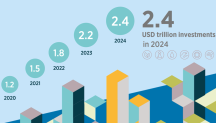

Global Hydrogen Trade to Meet the 1.5°C Climate Goal: Technology Review of Hydrogen Carriers
Newsletter
Hydrogen can be transported over long distances by pipeline or by ship. This report compares the transport of hydrogen by pipeline as compressed gaseous hydrogen with three forms used in shipping pathways: ammonia, liquid hydrogen and liquid organic hydrogen carriers (LOHC). The focus is on hydrogen transport rather than the transport of commodities made using hydrogen, noting that ammonia can be both a hydrogen carrier and directly used as a feedstock or fuel for different applications. Carbon-containing carriers (such as methanol or methane) are excluded.
This is part of a report trilogy focusing on global hydrogen trade in a 1.5°C scenario in 2050. The report covers transformation from gaseous hydrogen to a suitable form to allow its transport and storage; its use in the process of transportation itself; and its reconversion from the carrier back to pure hydrogen (if needed). Each step of the value chain is reviewed from a techno-economic perspective including costs and efficiency, and their potential evolution towards mid-century. Other reports in the trilogy cover the integration with demand, to assess a scenario for global hydrogen trade by 2050; and cost and technical potential of green hydrogen supply for various regions and time horizons under different scenarios and assumptions.




